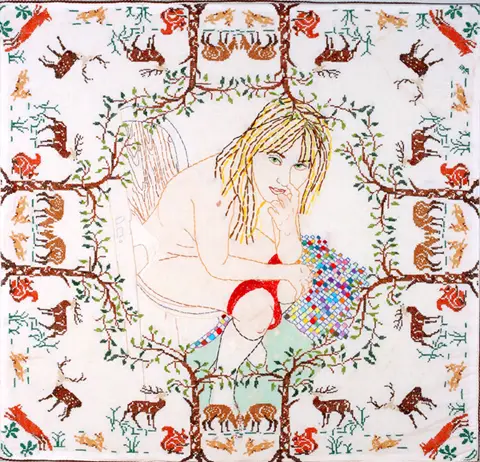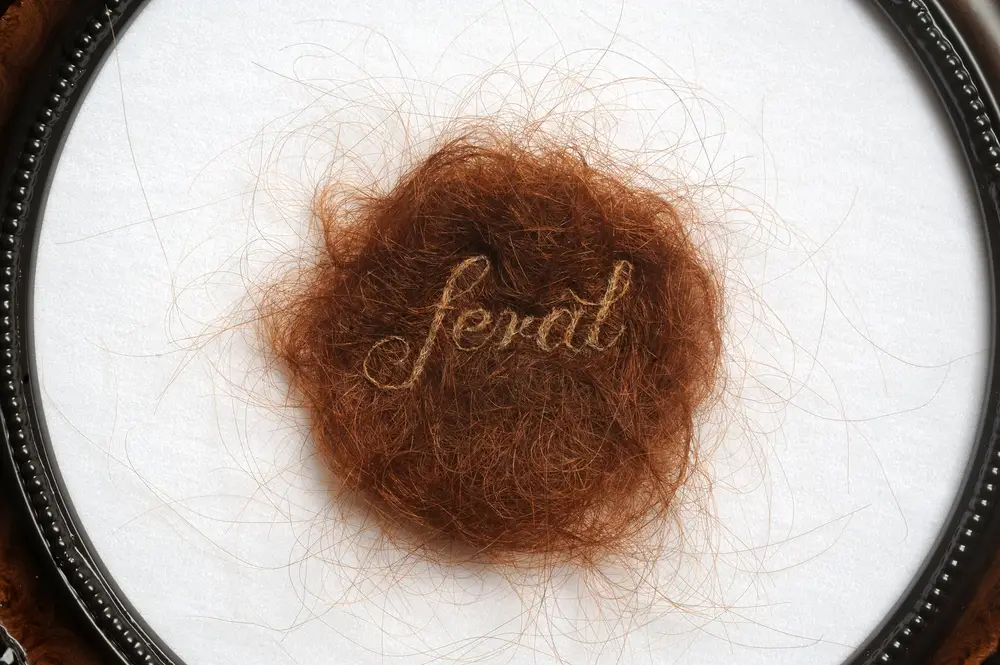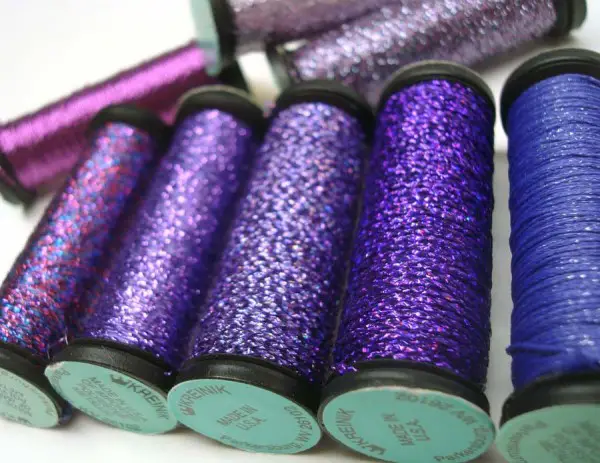‘I suspect that I find this practice so soothing because every living thing on this planet owes its existence to an endlessly repeating cellular echo that generates and supports the equally endless cycle of life and death.’
Willemien de Villiers is a versatile multi-media artist currently based in Cape Town, South Africa. She studied Fine Art at the University of Pretoria and as well as working with textiles, also writes, paints and works with ceramics.

Willemien believes that “to sew is to create an object. To sew is to transform. To sew is to give shape to an image, an idea and a narrative. To sew is to meditate, to connect. To repair.” What a beautiful ethos!
As you can see in Willemien’s work, the fabric is heavily stitched into then layered with illustrative motifs and pieces of writing. These all form thought-provoking narratives:
“Metaphors are inherent in my artistic practice to transform vintage domestic textiles into detailed artworks. This helps me to explore women’s complex relationships with craft and domesticity, along with the feminine body and lived experience.”
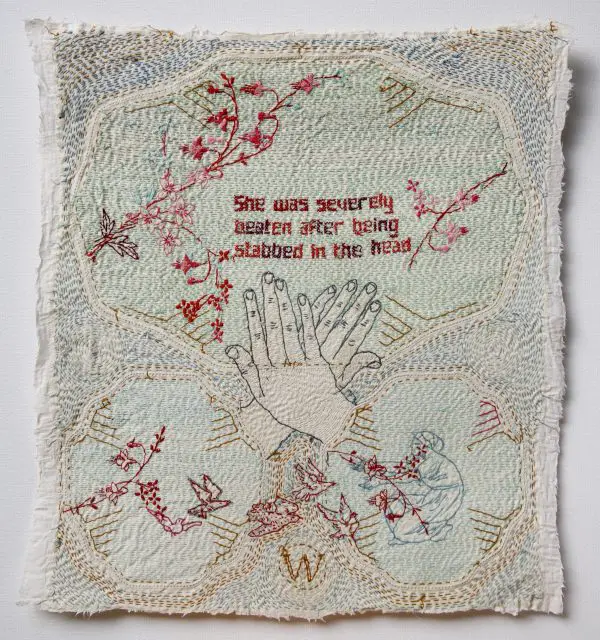
Combining images of bodies, words and diagrams carefully stitched onto found fabrics, creates an intimacy in Willemiens work. As the artist herself explains, “it is a shared intimacy which forms the basis of a connection between the artist and their audience“.

‘Immersing myself in this tactile experience, my mind seeks patterns, colours, texture’.

Want To Stay At The Edge?
How did your technique evolve?
I was born with a love of natural textiles and my first job after university (I have a degree in Fine Arts) was as a designer at a commercial textile printing company. My creative journey meandered from there, to where I’m now, over four decades of non-stop exploration, including screen-printing on fabric, ceramics, painting and writing – I have published two novels, as well as several short stories.
About 12 years ago, when I finally picked up a needle and thread to embellish a painting I wasn’t happy with, it felt like a homecoming. I soon realised that I needed to pursue stitching as my primary medium, and luckily I already had a large collection of domestic vintage linen and cotton items to work with. My technique developed organically as I’m an intuitive artist who always works from my gut, without much pre-planning.
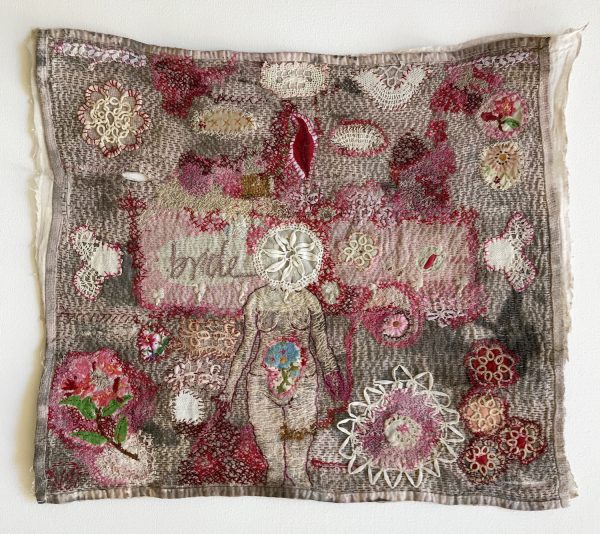
I love how Willemien describes picking up a needle as a “homecoming”. I think this can be a strong feeling for women who discover needlework. Through this medium we connect with our female ancestors who carefully passed their crafts down through generations.

‘The idea of stains excites me, as a metaphor for the habitual sanitising of women’s messy, and often devalued, lives. And of course, women are still mainly responsible of dealing with the stains (literal and figurative) of day-to-day domestic life.’

Where do you think your creativity is taking you?
I honestly have no idea! Whenever I feel demotivated, or that my work is getting too predictable or stale, I go back to basics, which for me is writing. It always takes me a place that feels new, but is somehow (and not surprisingly) still deeply rooted in my core theme – my experience of being female in the world I live in.

Being a writer as well as a visual artist is particularly interesting as this inherent impulse to tell and share stories is a strong theme that comes through in Willemien’s practice. For me, a lot of her pieces read almost like storyboards, and take the audience on an immersive visual journey.
What other artists inspire you?
I’m inspired by artists who are passionate about their work, irrespective of medium or themes. Artists who take risks such as Igshaan Adams, Suzanna Scott, Pascal Monteil and Shane Drinkwater are consistently inspiring.

‘I’m drawn to images from medieval times to about the 16th century, where science wasn’t so clear-cut and absolute; where the boundaries between plant and animal and mineral were still blurred.’
What is your favourite tool to use in your practice?
My needles and thread snippers.

Can you share one creative tip with our readers?
Don’t be scared to rip into something that’s simply not working. Textiles are so forgiving – cut, tear, destroy – you won’t regret it. Then stitch it all back together.
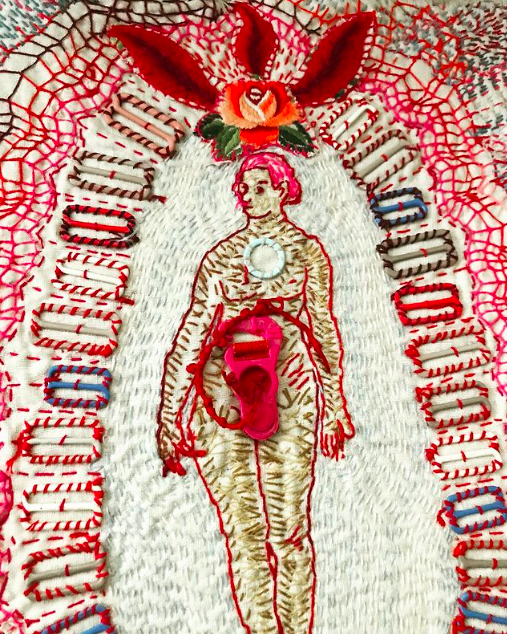
There is a deep level of trust and understanding between Willemien and her work, a long history of exploration in her practice that gives her the confidence to dig deep and completely transform the cloth. To dare to “cut, tear and destroy” could revolutionise the way we see our textiles if we have the courage to try.
Thank you so much to Willemien for taking the time to interview with us. If you’re not already, make sure to follow her on Instagram and check out her website for a huge display of work.



